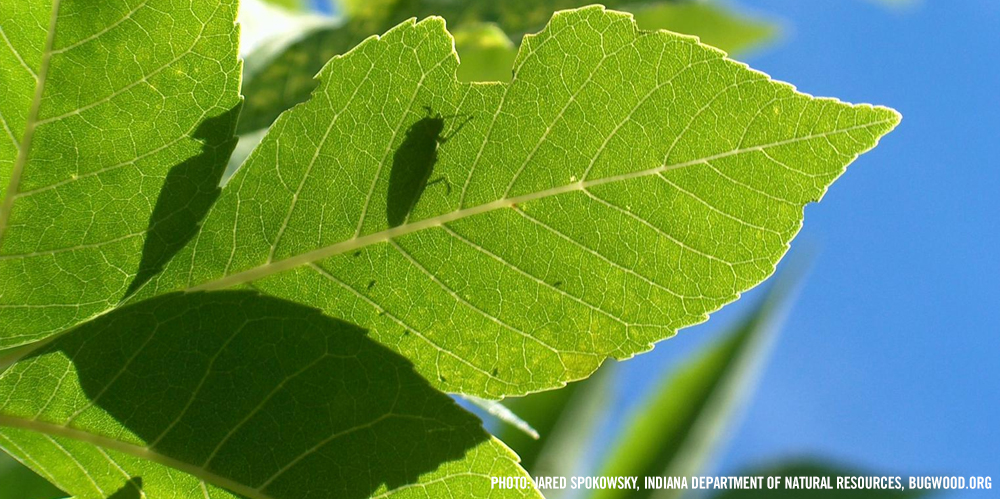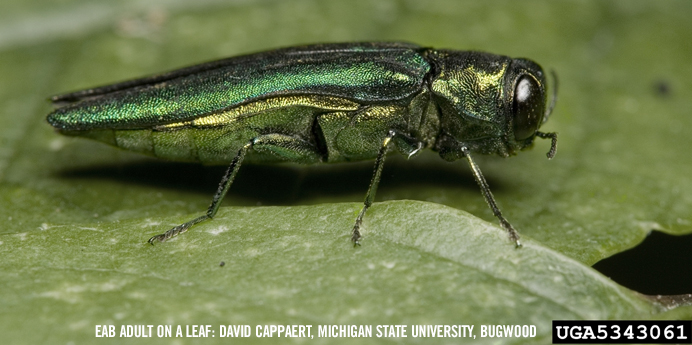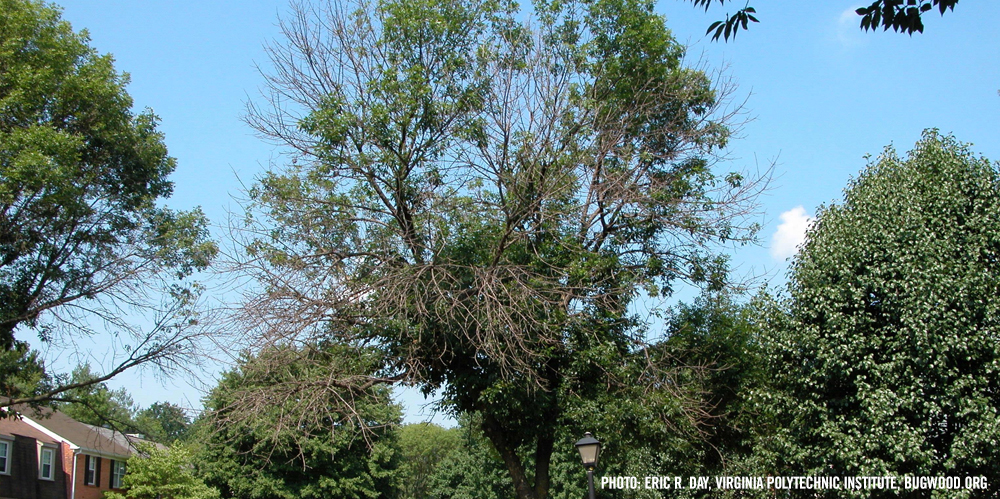The Emerald Ash Borer (EAB) was first discovered in Detroit, Michigan in 2002. Recently, the Emerald Ash Borer has been found in our own backyard, Boulder —a chilling discovery with far-reaching consequences. Since 2002, EAB has been responsible for killing over 50 million Ash trees in 21 states plus Canada. Colorado is the first western state in which it has appeared. With an estimated 1.48 million ash trees in the Denver metro area alone, we have a lot at stake. While most of us in the business of caring for trees knew EAB was coming, we didn’t know it was going to occur this soon.
The Emerald Ash Borer is a native of Asia and is believed to have been brought into this country in wood crating material. It is also believed that its movement throughout the country can be sourced to nursery stock and firewood.
 Emerald Ash Borer Facts
Emerald Ash Borer Facts
- Adult beetles are metallic green and approximately 1/2” long.
- The adults emerge from mid-May to early June.
- In mid-July, the beetles lay eggs. After hatching, the larva tunnels under the bark, disrupting the transport of nutrients and water to the tree.
- It can take three to four years for visible effects to become apparent.
- EAB will kill untreated trees.

on the trunk indicate an EAB infestation. Photo from: donnan.com
Symptoms of Emerald Ash Borer
- Sparse leaves in the upper part of the tree.
- D-shaped exit holes.
- New sprouts on lower trunk and branches.
- Vertical splits in the bark.
- Winding S-shaped tunnels under the bark.
- Woodpecker activity.
Treatment Options
The best strategy for Emerald Ash Borer is prevention.
There are good, cost-effective treatment options to control Emerald Ash Borer, including trunk injections, soil treatments and sprays. Our treatment recommendations for your ash trees will vary based on the size of the tree, its condition and structure, available irrigation, the number of trees you have and their value on your property. Mountain High’s Certified Arborists are well-versed in the treatment options available to you, and we’re ready to create a plan for your trees.
Along with Arbor Jet and Vail Resorts, Mountain High Tree was involved in the testing of a trunk injection device and technique used in controlling the Mountain Pine Beetle. Importantly, this device will once again be the tool of choice in the control of the Emerald Ash Borer.
While Arborists have learned a great deal from what Michigan and other places have done to control Emerald Ash Borer, Colorado poses its own challenges. It’s important to keep our unique weather and environment in mind and know that our conditions may impact insect life cycles and other factors. We will stay focused and continue to study all available resources so we can provide you with the most up-to-date advice and guidance.
With EAB, time is of the essence. We already know what this insect is capable of—if we work together and stay proactive, we can make a positive difference. We’re here to help. Call or email us about your ash trees today.
The Emerald Ash Borer (EAB) landed in Colorado just recently. In 2013, the Colorado Department of Agriculture confirmed that the Emerald Ash Borer was found in Boulder County. It spreads quickly, so we expect that the EAB will start showing up in Denver and the Front Range in the coming years. About 15% of the trees in Denver are Ash trees, making this insect a huge threat to our urban forests. The Emerald Ash Borer has been responsible for the demise of tens of millions of Ash trees across the nation, so we have dedicated this page to sharing current news, informational videos, and homeowner information on what they can do to protect their Ash tree from the Emerald Ash Borer.
Want to know if you should protect your Ash tree?
Call our Denver Office: 303.232.0666
or contact us online:
![]()
 BE PROACTIVE:
BE PROACTIVE:
If you, or anyone you know, in Denver or the surrounding areas think that your trees might have the Emerald Ash Borer; please contact us immediately, as well as the Colorado Department of Agriculture and/or City Forester.
What you can do:
- Don’t move firewood. EAB larvae can survive hidden in the bark of firewood. Buy local, burn local.
- Inspect your trees, ask us if you are concerned about your tree.
If you have a healthy, well placed Ash Tree that does not show any sign of Emerald Ash Borer or other pests, and want to protect it, you have a couple options:
Homeowners can protect healthy Ash trees themselves, if:
• The trunk less than 15 in. Diameter at Breast Height.
View Emerald Ash Borer Tree Measurement Diagram here»
• With over the counter soil drench products. One option are products containing 1.47% imidacloprid. These products are most effective when applied between May 1st and June 15th. Disclaimer: Over the counter formulations are not as strong as professional formulations and are not advised to be used on trees with a DBH of greater than 15 inches.
• Contact us at 303.232.0666 if you would like our recommendations on homeowner applied treatments.
We can help you protect ash trees:
• With a trunk greater than 15 in. Diameter at Breast Height.
• Later in the year, using specialized equipment to apply insecticides that contain imidacloprid, dinotefuran, azadirachtin or emamectin benzoate.
Mountain High Tree is here to help! Have us come out and take a look at your Ash Tree to see how best to protect it from the Emerald Ash Borer. Not all trees are in immediate danger, so we will recommend if preventative measures are needed for your Ash trees.








